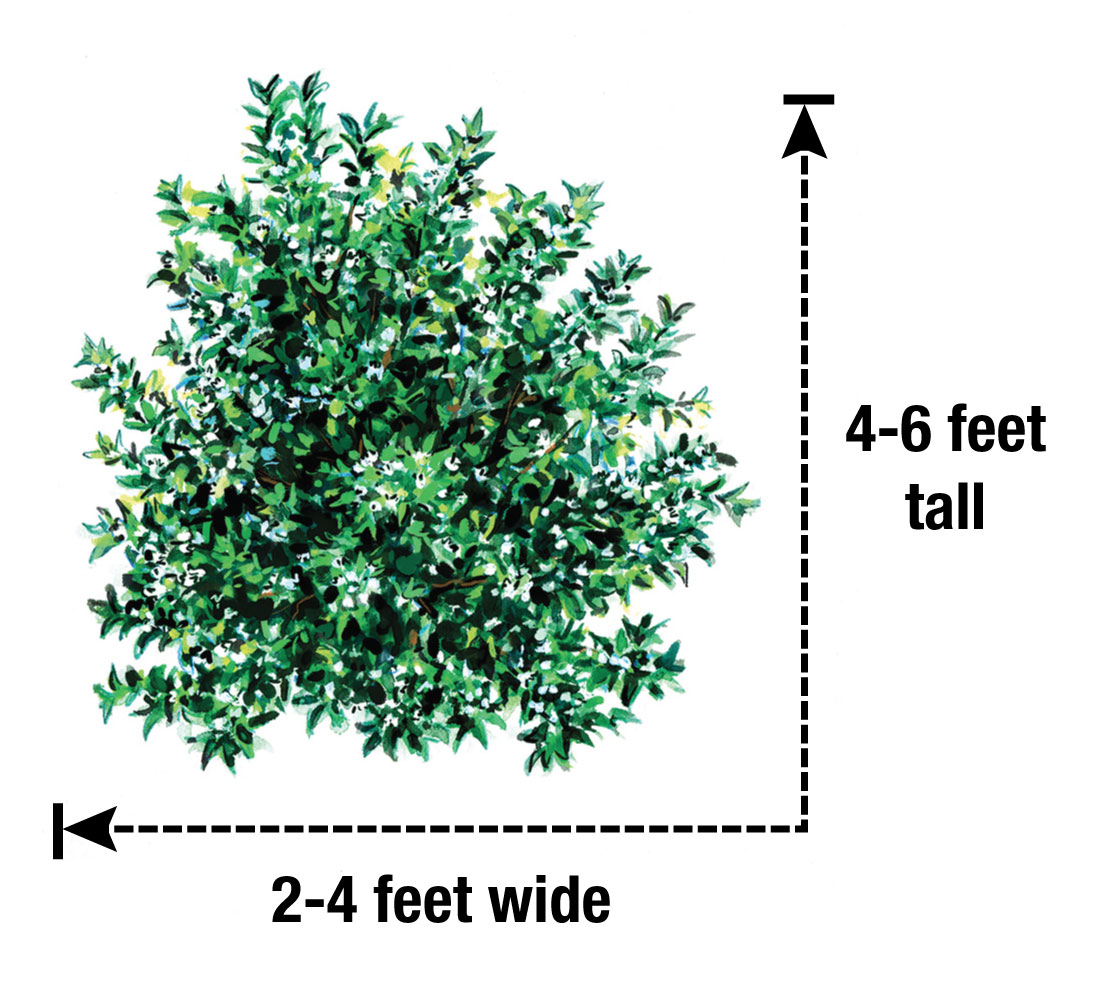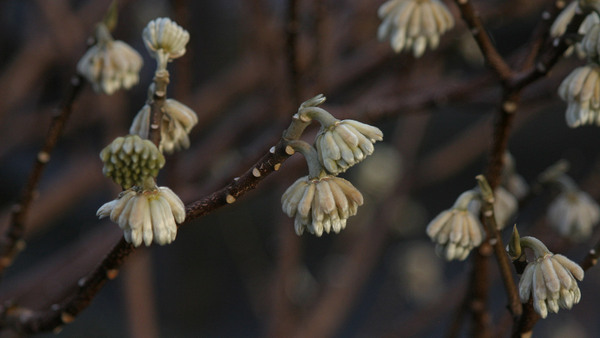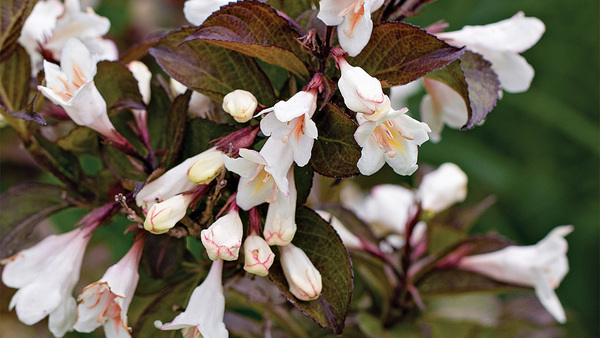
I wouldn’t say I’m a full-on curmudgeon. However, a plant with spikes that can hold its own against rowdy neighborhood kids will always pique my interest. Enter ‘Sasaba’ holly tea olive, which scores low on the touchy-feely scale but high on many other garden metrics. Several species of Osmanthus grown in the United States are marginally hardy as you go below Zone 7b. I live and garden right between Zones 6 and 7. One of the most popular Osmanthus species, fragrant tea olive (O. fragrans, Zones 7b–10), has been frozen to the ground at my house for three of the last 10 years. However, O. heterophyllus and all of its cultivars have always held their own in my Tennessee garden. They are distinctly hardier and have wider adaptability across the country.
Meeting almost any tea olive in bloom is like a first date that went extremely well. And trust me—you want a second date. ‘Sasaba’, one of the hardier options out there, is no different, with fragrant blooms that will captivate your senses as it comes into its own in early fall. This cultivar made its way into the United States thanks to plantsman Barry Yinger and Brookside Gardens in Wheaton, Maryland, in the late 1970s. The name ‘Sasaba’ is Japanese for “bamboo leaf,” referring to the dense clusters of leaves at different points on the branches. These leaves are dark green with eight to 13 spine-tipped lobes that are cut deeply and clustered in a way that resembles tufts of small bamboo leaves. ‘Sasaba’ holly tea olive is slow growing and in most cases taller than it is wide. Over time it could possibly reach 20 feet tall, although it stays much smaller in my experience. I have rarely observed much fruit on any tea olives, but I have seen abundant fruit on ‘Sasaba.’ The fruits are small, oval, bluish-black drupes that hang under the stems. Growing out seedlings will result in the same “bamboo leaf” mutation. If you do an image search for ‘Sasaba’, you will soon find variations in the photos. This is most likely a result of seedling plants being sold and cultivar confusion over time.
Yes, this is a prickly “collectors” plant that will most likely never find its way to a big-box store shelf. The good news is that it will rarely need pruning, only some shaping, and will reward you with its fall fragrance year after year. During the growing season, it makes a wonderful backdrop to colorful annuals and adds unique texture to the garden. For most gardeners, ‘Sasaba’ holly tea olive will be happiest if you plant and establish it in spring, so you’ve got time to find the perfect spot in your garden for one more plant.
‘Sasaba’ holly tea olive
Osmanthus heterophyllus ‘Sasaba’
Zones: 6b–10
Conditions: Full sun to partial shade; moist, well-drained soil
Native range: Japan and Taiwan
—Andy Pulte is a faculty member in the plant sciences department at the University of Tennessee.
Illustration: Elara Tanguy
Sources
- Broken Arrow Nursery, Hamden, CT; 203-288-1026; brokenarrownursery.com
- Woodlanders, Aiken, SC; 803-648- 7522; woodlanders.net
Fine Gardening Recommended Products

The New Organic Grower, 3rd Edition: A Master's Manual of Tools and Techniques for the Home and Market Gardener, 30th Anniversary Edition
Fine Gardening receives a commission for items purchased through links on this site, including Amazon Associates and other affiliate advertising programs.

Buffalo-Style Gardens: Create a Quirky, One-of-a-Kind Private Garden with Eye-Catching Designs
Fine Gardening receives a commission for items purchased through links on this site, including Amazon Associates and other affiliate advertising programs.

Plant Covers Freeze Protection 10 ft x 30 ft Floating Row Cover 0.9oz/yd²
Fine Gardening receives a commission for items purchased through links on this site, including Amazon Associates and other affiliate advertising programs.




















Comments
Thanks for addressing this topic. I was looking for the information regarding the same. Keep sharing the info, kudos TalkToWendys
Log in or create an account to post a comment.
Sign up Log in